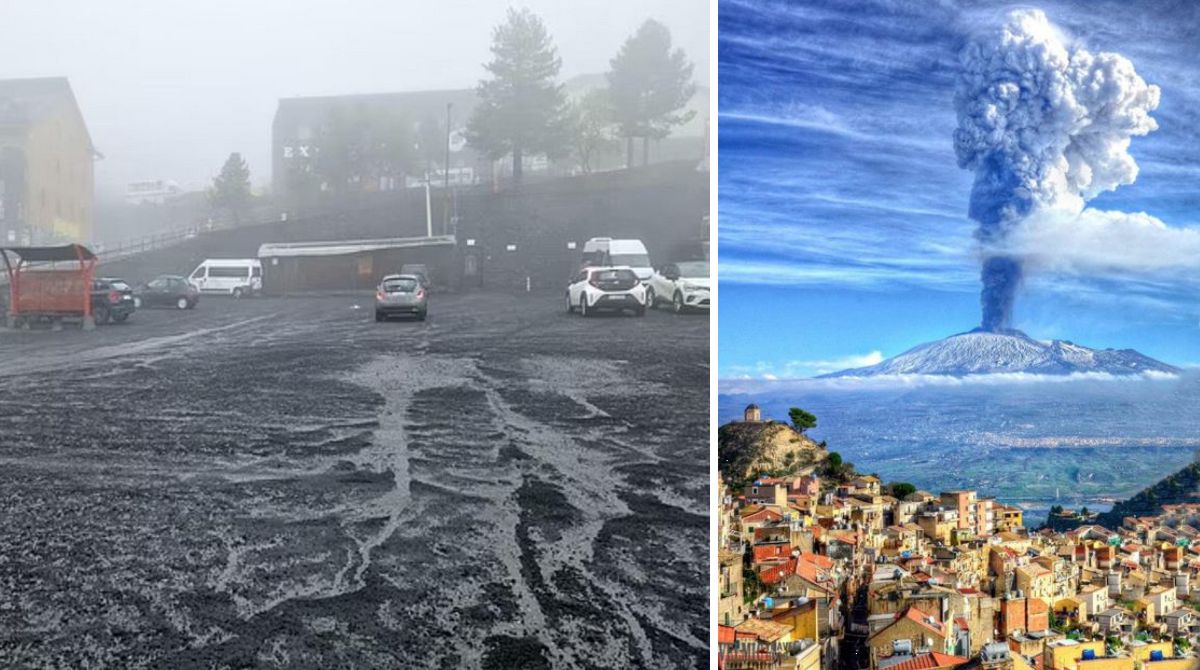In Europe, the Etna volcano, which is one of the most active volcanoes in the world, began to erupt again. As a result of the eruption, which took place on Sunday, May 21, ash covered the largest tourist city of eastern Sicily – Catania, and flights at the airport were also suspended there.
Information about the NP was confirmed by the Italian National Institute of Geophysics and Volcanology. According to his report, a huge plume of molten liquid erupted from the volcano, then a cloud of gray ash rose into the air and covered Catania, on the coast of which there are many hotels with tourists. In addition, ash settled in the neighboring city. Fortunately, there have been no reports of casualties yet.
Residents of the neighboring towns, Adrano and Biancavilli, informed the authorities about loud bangs coming from the side of the volcano. Against the background of the eruption, the airport of Catania stopped working. The authorities concluded that take-offs and landings of airliners in such conditions are dangerous. As a result, one part of the flights to the tourist city was canceled, and the other part was redirected to other airports. Thus, data from the departure board from Catania airport showed that many flights due to arrive yesterday morning were canceled or diverted to Comiso airport. The airport is currently operating with “initial restrictions”, so delays are still likely and passengers traveling through the airport are strongly advised to check the status of their flight before departure.
Italy, a very popular destination among travelers, faced another disaster last week – flooding. As a result of a series of deadly episodes in the northern region of Emilia-Romagna, at least 15 people have died, 36,000 have been forced to leave their homes, and several people are missing. Sad pictures of the consequences of the flood are spreading on social networks. The extreme weather resulted in the region receiving six months’ worth of rainfall in just 36 hours.
Background: The 3,357-meter-high volcano, the tallest in Europe, erupted on August 9, 2021, and now erupts several times a year. So, last year, the volcano made locals and tourists nervous, when it started spewing fountains of fire 600 meters high, columns of ash and smoke up to 8 km high from the southeast crater. But one of the most tragic events related to the activity of Etna happened in 1992. At that time, the lava flow threatened the entire municipality, in which about 8,000 people lived.
Despite all the obvious risks, its activity attracts people: the locals there are engaged in agriculture, growing orchards and vineyards, because the volcano makes the surrounding soil incredibly fertile, and tourists come from different parts of the world to see the volcanic landscape with their own eyes.
We will remind you that volcanoes have repeatedly interrupted air traffic. Just a month ago, the Russian volcano Bezymenny in Kamchatka attacked flights in the United States: then mass cancellations of flights began in Alaska. But the most famous volcano in the history of air travel remains the Icelandic volcano Eyjafjallajökull, whose eruption in mid-April 2010 for some time completely paralyzed air travel in almost all of Europe. Volcanic ash, rising to a height of 10,000 meters – to the level of the main echelon for civilian aircraft, covered almost all of Europe.

